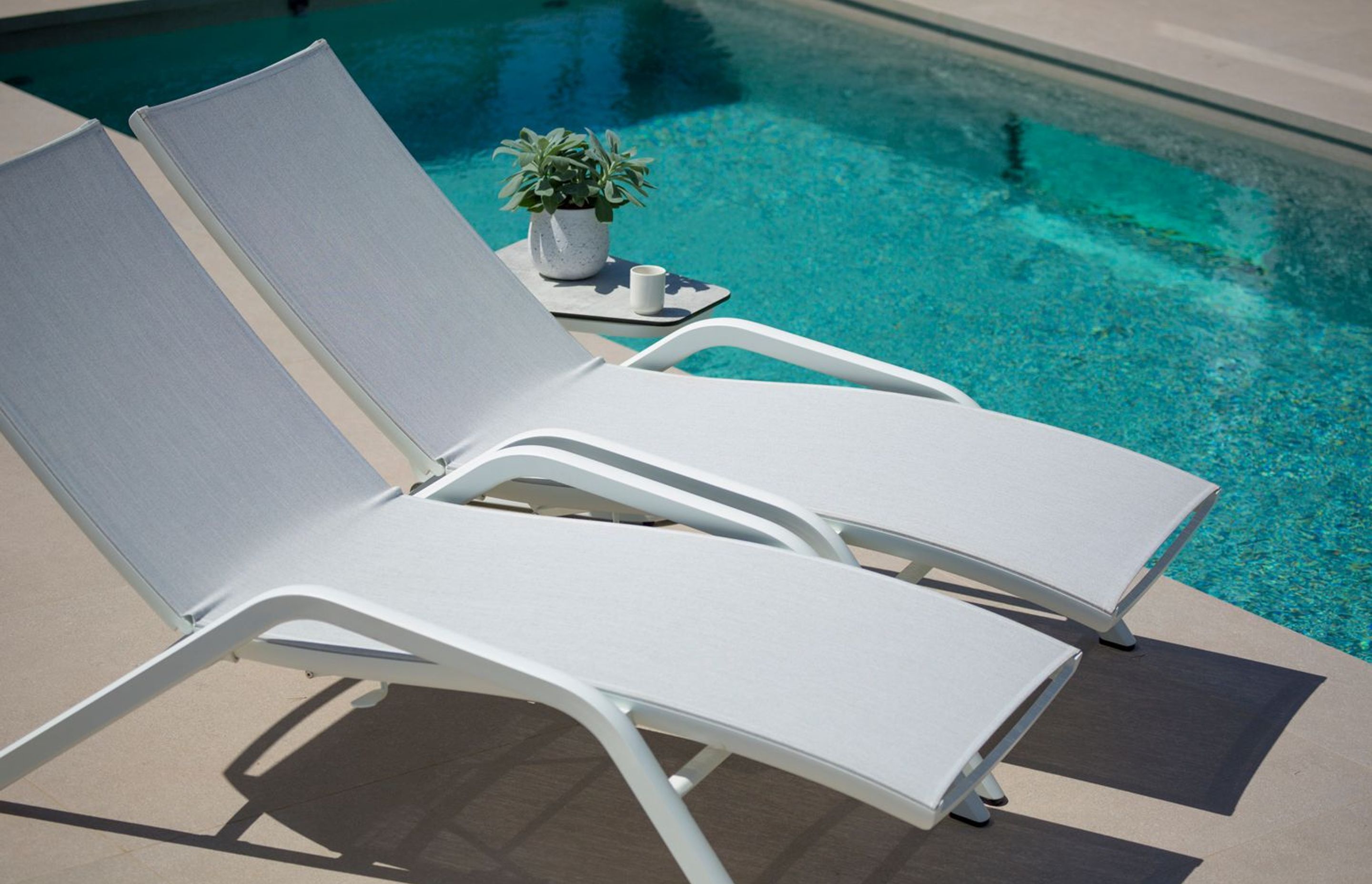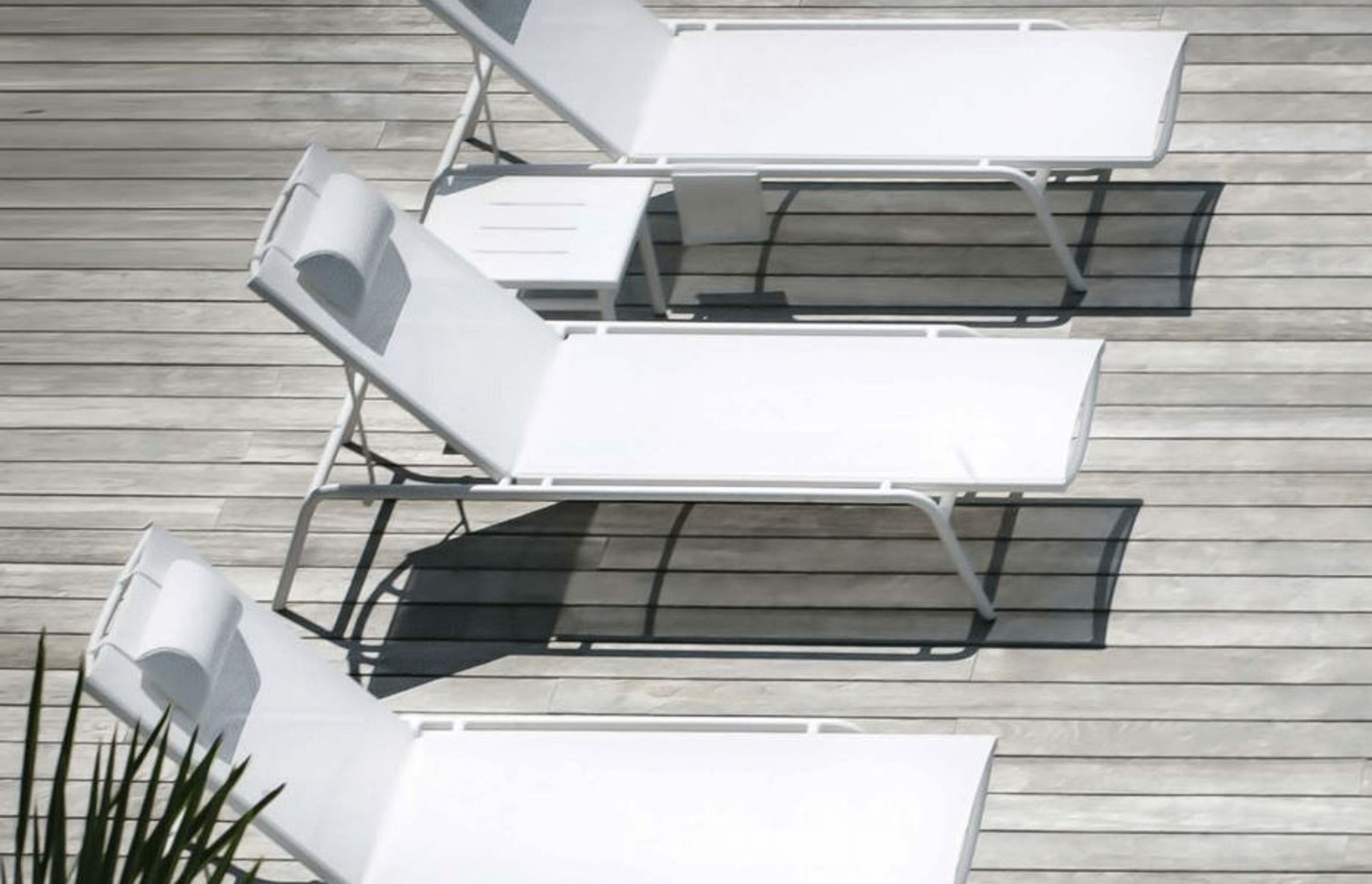How to choose the best sun lounger for your space
Written by
17 October 2019
•
4 min read

It’s hard to beat a sun lounger on a hot summer’s day. Destined for relaxation, the sun lounger becomes an integral part of an alfresco area. We spoke to Poynters about what to think about when choosing a sun lounger.
Is your outdoor area in need of a freshen up ahead of summer? Sun loungers may be the perfect addition. Here’s 10 tips to choose the best sun lounger for your home.
1. Space
How much available space do you have? Sun loungers generally take up quite a bit of room so consider the dimensions of the space and where a lounger could be placed. As sun loungers are often reclined, they can take up additional space if the legs are located at either end of the lounger when reclined. To save space or for smaller areas, look for legs that are placed in the central portion of the lounger.
2. Full or part recline
Do you want to lie flat in the sun, or sit up and read a book in your lounger? If it’s both, or you’re inclined to lie down completely, then it pays to ensure the lounger can recline to a flat position. Sun loungers with a non-flat seat and back will not lie flat.
3. Form of the lounger
While some prefer a completely flat surface, others may prefer the more ‘snug’ feeling of a lounger that incorporates a slight recess in which to sit. A slight dip may eliminate that feeling of sliding forward, which improves comfort.
4. Frame
Most sun loungers are made with either a wooden or aluminium frame. The choice of frame will depend on the overall design scheme of the area and the suitability of the material for the climate. It’s worth talking to the retailer or manufacturer to understand the best material for your home.
5. Material
The choice of material will make a significant difference to the longevity of the lounger. “For example, a high-end mesh material such as Batyline has 100 per cent memory,” Poynters’ Anthony Chan says. “This means it will always return to its original tautness after use, avoiding the visual material sag seen in cheaper materials as the material wears.”
6. Squabs
Squabs add to the lounging experience. “While most sun loungers can be used without squabs, the addition of a squab can greatly increase comfort. There are many options for squabs, and we provide customised options to account for every style and size of lounger,” Anthony says.
7. Wheels
Are you likely to move your sun lounger frequently? If so, it might be best to select a lounger that has wheels for ease of moving the sun lounger around the deck or outdoor area.
8. Weight
If your sun lounger will need to be picked up and moved around or stored, considering the weight of the frame is important. Can it be easily moved? If not, it may be better to select a lounger that can be easily picked up. Lighter loungers typically have aluminium frames.
9. Storage
Especially in situations such as beach houses or holiday homes, the need to store sun loungers inside during periods when the property is out of use may arise. In these instances, considering stacking loungers may be a good option to allow for ease of storage in smaller spaces.
10. Height of backrest
Sun loungers are designed very differently and the position and height of the backrest will vary between sun loungers. Some backrests are lower than others. A backrest that supports the head well will greatly improve comfort. “When testing a sun lounger, always consider how well the backrest supports your head. It has a big impact on your lounging experience.”
Find out more about Poynter’s range of designer sun loungers.


